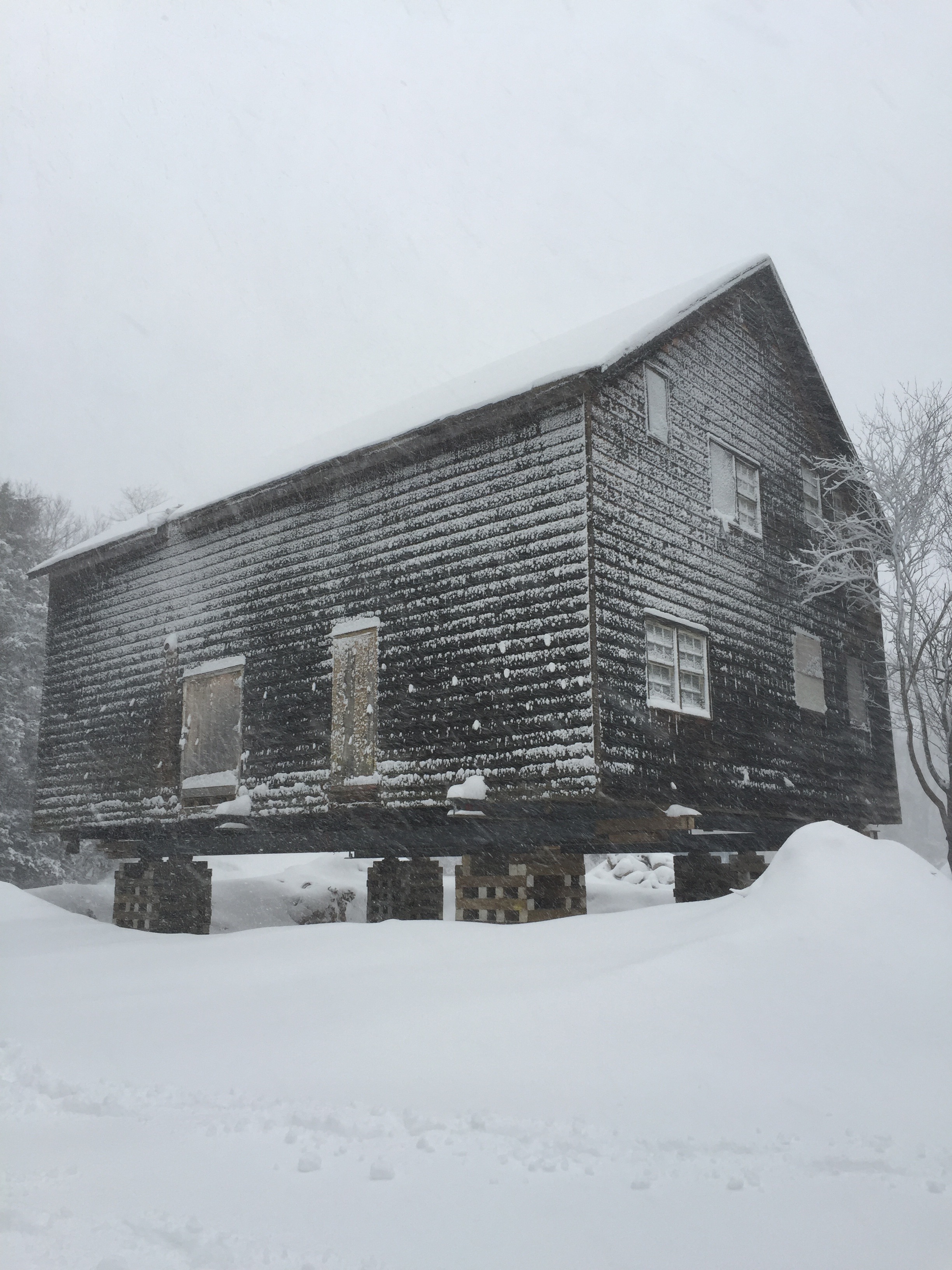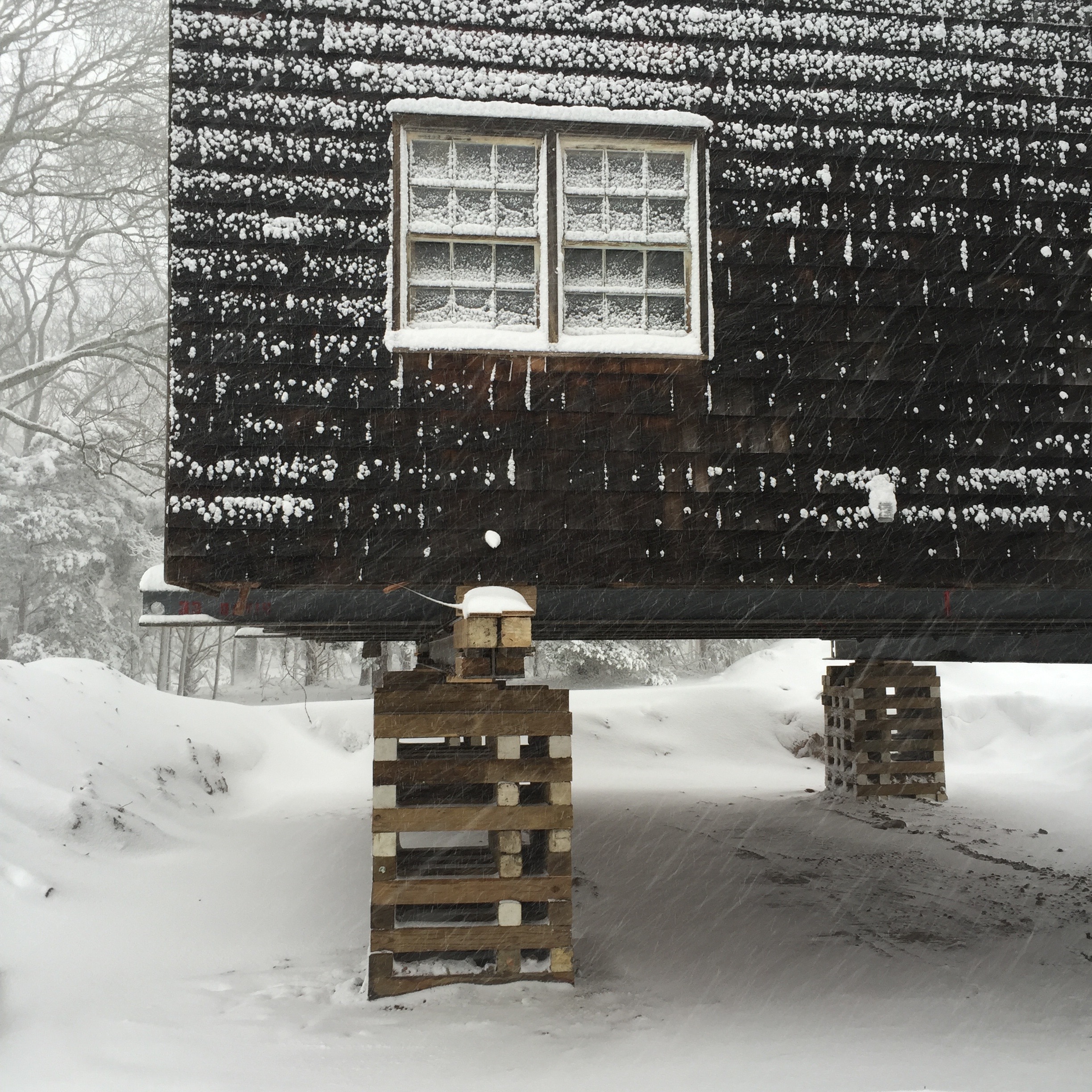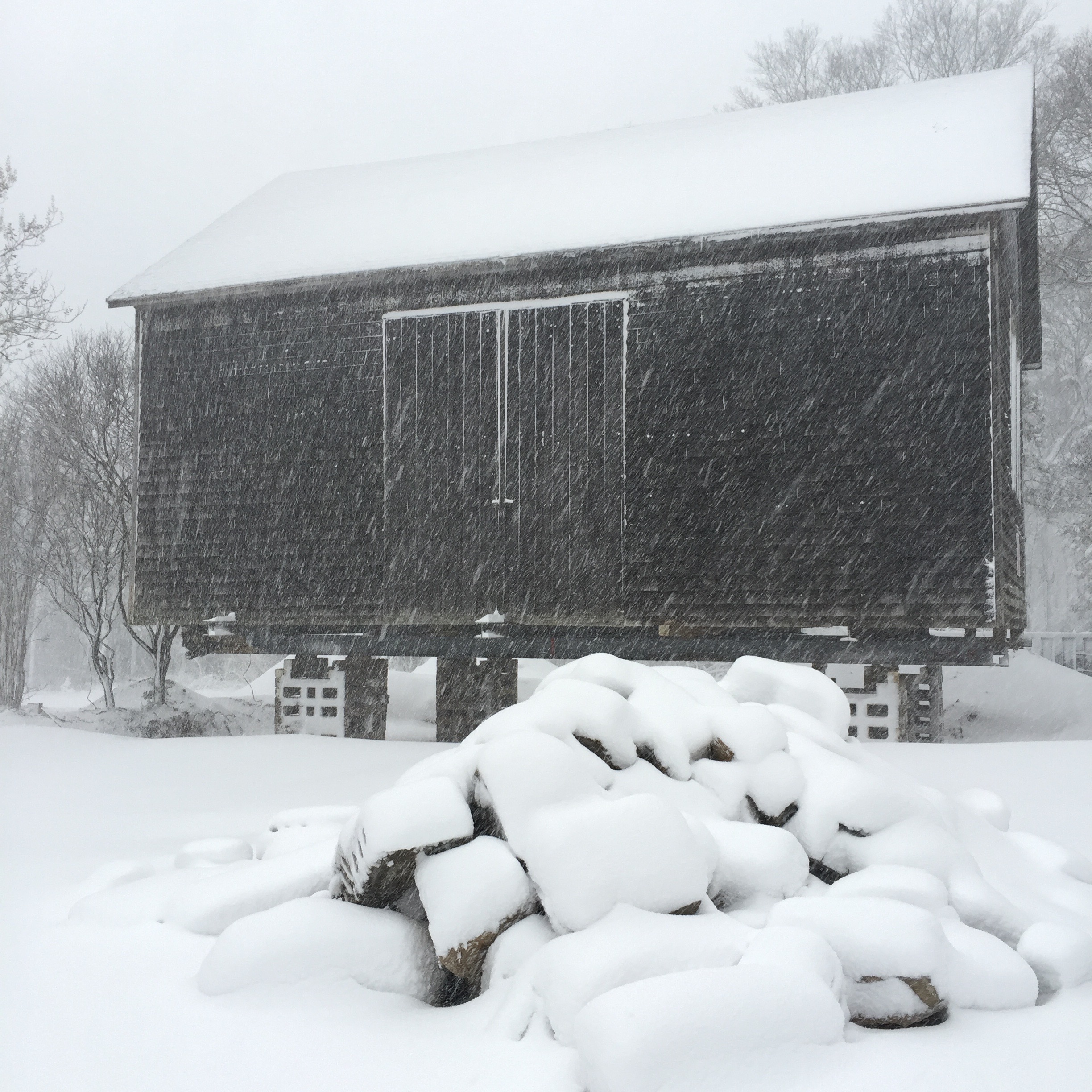THE 2015 RESTORATION OF THE JOHN LITTLE / GARDINER BARN
In 2004, Almost a decade after the Duck Creek Farm property was sold to the town in December 2004, the Arts Center at Duck Creek founders began organizing informal exhibitions at this site. Shortly thereafter, the Town of East Hampton began an 18 month restoration of the John Little Barn. In 2018 the Arts Center at Duck Creek became a New York State 501(c)3 not-for-profit corporation and organized it’s first full season of programming, and signed a ten-year license agreement with the town in 2019.
Duck Creek Land Acknowledgment
by Jeremy Dennis, Shinnecock Nation, 2021
Please visit Jeremy Dennis’ website On This Site – Indigenous Long Island for more information.
The Arts Center at Duck Creek is on what is traditionally Montaukett ancestral territory which spanned present-day Sag Harbor and Wainscott to the west and Montauk Point to the east. This land acknowledgment acts as a reminder of the land dispossession and continual displacement of Indigenous peoples and our commitment to dismantling the ongoing effects of this colonial legacy.
For several thousand years before the first European colonists, the first known inhabitants of this area of Springs, East Hampton, and Montauk town were the aboriginal Montaukett — a place name spelled a dozen different ways in early records. It was not a “tribal” name, but a place name which the colonists conferred upon them as they designated them as a “tribe.” The meaning of Montaukett in William Wallace Tooker‘s Indian Place Names on Long Island is given as either the “high or hilly land” or the “fort country”– both of which appear to fit Montauk topography and the presence of two fortified places.
The Montauketts are members of the larger Algonkian language family and peoples who inhabited the Atlantic Coastal Plain from Canada to the Carolinas; they spoke a variant of the language of the Mohegan-Pequot, across the Long Island Sound from them.
Today, the Montaukett continue to pursue New York State and Federal recognition along with reclaiming their ancestral territory of Indian Fields in Montauk. It has been said that the Montaukett Nation has withdrawn from the public eye to focus on strategies designed to strengthen their tribal structure.
Although not officially associated with the Montaukett Nation, the Montauk Indian Museum serves to preserve and present to the public the history of the Montaukett people.
Squaw Road
Squaw Road may have likely received its name from 'Squaw Cove,' a site a short distance to the north which was once said to be an ancient Montauk Indian village site. In 1927, the Museum of the American Indian in N.Y.C. investigated the site which had the largest single deposit of shells on Long Island (180 feet by 25 feet and a depth of 26 inches.) These shell deposits or shell middens act as an indication of Indigenous village sites before colonization.
Another origin of this name comes from the 1667 journal or colonial Reverend Thomas James who wrote of the Indigenous people of Accabonac Creek. Two women, he wrote, were living in Accabonac for many years before being driven out to Montauk to the east.
'Squaw' is a word that originates from Mohawk or Algonquian languages which translates to 'female'. There is still debate amongst Native people, but generally, many agree that the word is a derogatory term for Native women. Today, Algonquian people have adapted to using the word 'Sunksqua' to represent ceremonial female leaders in their communities.
References
Springs Improvement Society, 'Springs - A Celebration' pp. 20, 1984
Indian Country Today 'The Word Squaw: Offensive or Not?'
Jeannette Edward Rattray, History of East Hampton, 1953, pp. 13
Please visit Jeremy Dennis’ website On This Site – Indigenous Long Island for more information about indigenous land throughout Long Island.
DUCK CREEK FARM HISTORY
The Duck Creek Farm Historic Site is an 18th century homestead including a farmhouse occupied by the Edwards family, members of the original settlers of the Maidstone Colony (now known as East Hampton). The property was purchased by the Town of East Hampton with Community Preservation Funds in 2006. Its restoration and adaptation as an arts center that is FREE AND OPEN TO ALL was spearheaded by a group of local residents, who now manage the property and its programming as a 501(c) (3) not-for-profit corporation called The Arts Center at Duck Creek.
The Arts Center at Duck Creek develops and operates fine arts programming in the 19th Century barn once owned by abstract expressionist John Little. In the 1950's, the artist used this space as a studio and meeting place for artists in the then burgeoning art colony. Our mission is to honor the spirit of John Little and his fellow abstract expressionists by providing programming that highlights our unique historic and aesthetic interest as part of the cultural, economic and social history of East Hampton.
Programs at the Arts Center at Duck Creek take place seasonally, between May 1 - October 31. Hours vary based on programs. Please check our current exhibitions and event pages for details
CLICK THE IMAGE TO READ ABOUT ARTIST JOHN LITTLE IN OUR 2021 EXHIBIT CATALOG
EAST HAMPTON TOWN DOCUMENTATION OF DUCK CREEK FARM
During the nineteenth century there were four large farms in Springs: Duck Creek Farm and Franklin Farm on Three Mile Harbor; and the Parsons and Miller farms at Fireplace and Hog Creek. According to the account books of the Parsons farm, raising sheep and cattle was the primary agricultural activity of these farms from the mid eighteenth century through mid-nineteenth century, this was also apparently true of Duck Creek Farm.
The main barn that houses the Arts Center at Duck Creek was built by David Johnson Gardiner in the third quarter of the nineteenth century. It was moved from it’s original location in East Hampton Village in the 1949. This late representation of the three-bay "English" barn was the principal barn design built in East Hampton from the 17th century through the 19th century. The sawn pine frame, the overhanging eaves and original sliding barn doors are among the characteristics that would be typical of this later period.
The three-bay "English" barn above was the original Edwards Farm barn which was moved from Duck Creek Farm to Commercial Dock (off Gann Road) in approximately 1932. The Gardiner barn has the same spatial relationship to the farmhouse as did the original barn.
The goals for the barn are to retain the features of John Little's studio (the open interior, the north studio window and the tall doorway in the north wall) and to retain and enhance its integrity as a barn.






















